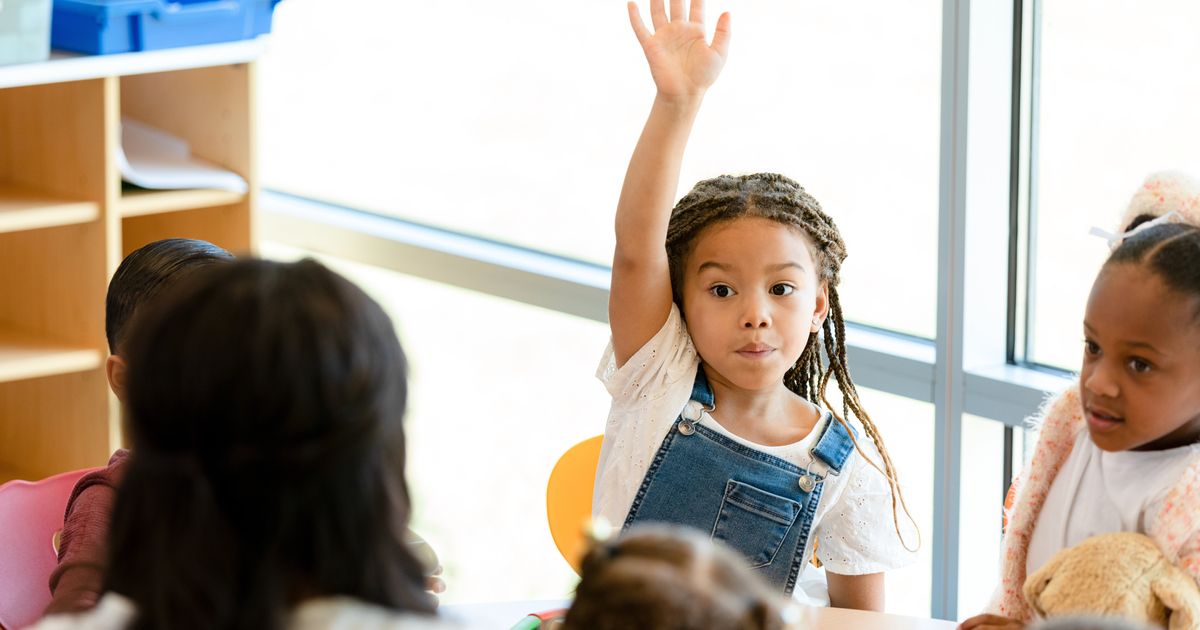News
17 Things Kindergarten Teachers Don’t Expect Their Kids To Do
We know that all children mature on their own timelines and that growing up isn’t a race. But when we look around at what other kids are up to, it’s difficult to avoid comparisons. If the kid next door speaks in full paragraphs at 12 months or reads books at age 4, we’re prone to worry about how our children stack up.
Adding to this anxiety is our society’s intense focus on academic achievement, as measured via standardized testing in our schools. While most students don’t sit for these kinds of tests in kindergarten, the pressure is on from the moment they enter the front door. Teachers are expected to instill literacy and numeracy skills right from the start.
“In recent years, there has been a major push for more academics in kindergarten, leaving less time for play and socializing,” Julie Cusano, a kindergarten teacher in New Hampshire, told HuffPost.
“I often have parents worried that their child is starting kindergarten ‘behind,’ or ‘not ready,’” she said.
All of this can lead to unrealistic expectations for students, especially the littlest ones. While it’s true that some issues are best addressed with haste via early intervention, not every difference between kids is a sign of a delay — and most parents don’t have the training or experience to spot the difference.
Here, two kindergarten teachers describe some of the things that they wouldn’t expect their own children to do at age 5. Cusano has been in the classroom for four years, and Matteo Enna is in his 19th year of teaching kindergarten in California.
Note that some of these skills are kindergarten academic standards, meaning that kids aren’t expected to do them on the first day of kindergarten but should learn them by the end of the school year.
- Add and subtract with fluency. Students’ skills in this area should progress through fourth grade.
- Subitize. This is the ability to recognize numbers and quantities without counting. Children first learn to instantly recognize groups of three items and then four and five items.
- Color inside the lines and add details to their illustrations.
- Read.
- Write all the letters and numbers.
- Write their name.
- Cut accurately with scissors.
- Tie their shoes.
- Open milk cartons or food packages independently.
- Use sequence words (like first, then and finally) to retell familiar stories.
- Listen attentively to their peers and respond with follow-up questions. In other words, if your child misses an important detail of what someone says or, after someone speaks, asks a question that seems to come out of left field, don’t be alarmed. They’re learning how to listen for information.
- Recognize three-dimensional shapes (like spheres and cubes).
- Distinguish between nonfiction and fiction stories.
- Look to resolve conflict with peers before addressing it with an adult.
- Sit attentively and focused for more than 10 minutes.
- Wait patiently to join a conversation that is already in progress.
- Recognize the emotional cues and signals of their peers.
“I prefer that my students come into kindergarten having life skills, such as being able to put on their coat and dress themselves independently, over knowing how to add and subtract. The academic piece will emerge organically as I teach them throughout the year,” Cusano said.
Here are a few things she does like to see in kids coming into kindergarten:
- Understand how to use scissors or have some scissor skills.
- Recognize their own name in print.
- Draw lines and shapes. These are pre-writing skills.
In addition, children should have experience listening to stories read by adults and have some exposure to people counting items.
Children will learn to write letters, numbers, and names in kindergarten. But it’s play and socialization that will give them a strong start. “Giving children the opportunity to collaborate with each other, share, play, problem-solve, and communicate are the best things that they can come into Kindergarten with,” she said.
Enna worries that the push for academics leaves less time for kids’ social and emotional learning, which is equally important, both to them and to society at large. “Reading facial expressions of peers and being able to respond accordingly has great importance. If students can recognize their emotions and the emotions of their peers, then we are building a foundation based on empathy,” he said.
Another thing parents can do to help prepare their kids for kindergarten (and the rest of life) is to engage them frequently in conversation. Children need opportunities to express their “ideas and wonders,” said Enna.
Making sure these conversations happen requires parents to do something more difficult than quizzing their kids on their letters and numbers. It requires us to set aside our screens.
While screen time anxiety tends to focus on the number of hours kids spend on tablets or other devices, Enna said that he has noticed adults’ screen use causing “more and more of a disconnect between child and adult in all social settings (park, library, dinner at restaurants). As a result, fewer conversations occur, impacting vocabulary, listening skills, and, most importantly, curiosity.”
Rather than focusing on how many different words your child can recognize or write, set your phone and computer aside and take a moment to ask your child an open-ended question. What are they thinking? What do they notice? What do they wonder?
The resulting exchange will nurture both their cognitive growth and their relationship with you.
Read more

